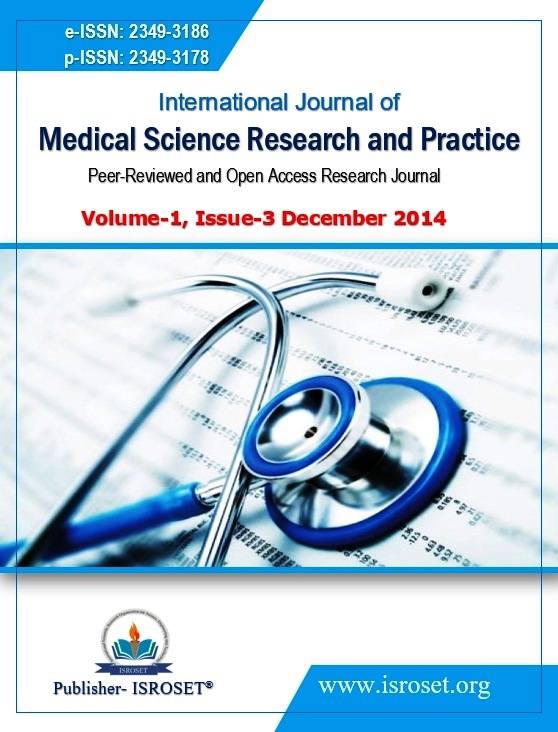TB contacts in family and high positive smear: Is there a need of sputum culture at the earliest?
Keywords:
Anti tubercular treatment (ATT), DOTS, High Positive Smear (HPS), MDR-TB, RNTCP, TuberculosisAbstract
Aim- To assess the role of TB contacts at various places in severity of PTB.
Background- Tremendous progress has been made in combating TB over the past ten years. But, dramatic changes in TB epidemiology are challenging TB control activities.
Material Methods- An observational study at DOTS centers in E ward of Mumbai Municipal Corporation was carried out during 1st January 2004 to 30th June 2004. A Pre-tested structured interview schedules were fulfilled by interviewing new smear positive pulmonary tuberculosis patients registered during study period. Data regarding sputum smear examination report at the beginning & at the end of intensive phase were collected from respective DOTS centre.
Results- 156 patients were interviewed with 67.3% males & 32.7% females. 24.2% were illiterate, 43.3% were unemployed, 52% belonged to socio-economic class IV & V, 53.8% were migrants.52.6% had history of known TB contact. High positive sputum smear was associated with history of known TB contact in family (p= 0.03, OR= 1.773, 95%CI= 1.102- 3.094). Patients with high sputum smear positivity were more likely to show sputum smear non-conversion at the end of intensive phase (OR= 2.347, 95% CI= 0.953- 5.782)..
Conclusion- Contacts in family play important role in causation of severe TB disease & consequently sputum non-conversion which is a risk factor for MDR-TB. Physicians or facilities can take decision about investigations like sputum culture and sensitivity at the earliest for such patients.
References
WHO. Tuberculosis control in South-east Asia Region. The regional report: 2012.
Government of India. Central TB division, DGHS. TB India 2011, RNTCP Annual status report.
RNTCP overview [Internet]. Ministry of health & family welfare. [Updated 2007 May.]Available from: www.mohfw.nic.in/NRHM/.../RNTCP_3rd_CRM_Brie fing_workshop.
Arora VK, Sarin R. Revised National Tuberculosis Control Programme, Indian Perspective. Indian J Chest Dis Allied Sci 2000; 42 : 21-26.
Park K. Parks textbook of preventive & social medicine. Chapter 5; Epidemiology of communicable diseases, I. Respiratory infections: Tuberculosis. 22nd ed. P.166.
Kumareson J. Epidemiology. In Narain JP;eds. Tuberculosis: Epidemiology & control,1st ed. New Delhi: WHO regional office for South-East Asia; 2002. P.16-7.
Guwatudde et al. Tuberculosis in household contacts of infectious cases in Kampala, Uganda. Am J Epi 2003; 158: 887- 98.
Zaher H et al. Yield of TB among contacts of new smear positive patients. mt J of TB & Lung Dis.Nov 2001 ;5(11): supplement 1: S209.
Tiwari S, Kumar A, Kapoor SK. Relationship between sputum smear grading and smear conversion rate and treatment outcome in the patients of pulmonary tuberculosis undergoing dots- a prospective cohort study. Indian J Tuberc 2012; 59: 135-140.
Rajpal S, Dhingra VK, Aggarwal JK. Sputum grading as a predictor of outcome in pulmonary tuberculosis. IndianJ Tuberc 2002; 49: 139.
Rupak S, Neeta S, Rohit S, Arora VK. Influence of pretreatment bacillary load on treatment outcome on pulmonary tuberculosis patients receiving DOTS under RNTCP. Indian J Chest Dis Allied Sci 2005; 47: 19-23.
Pande JN, Singh UB, Sinha S, Agarwal RC. Evaluation of Risk Factors and Prevalence of Drug Resistant Tuberculosis in North India. Chest 2011; 128 (4): 404S1.
WHO. The origins of DOTS. Research for action: Understanding & controlling TB in India. 2000.
Narain JJ. HIV associatd TB in developing countries: epidemiology & strategies of prevention. Tuber Lung Dis 1992; 73(1): 80- 82.
Moss AR et al. Tuberculosis in homeless. Am J Respir Crit Care Med 2000; 162: 460- 464.
Downloads
Published
How to Cite
Issue
Section
License

This work is licensed under a Creative Commons Attribution 4.0 International License.
Authors contributing to this journal agree to publish their articles under the Creative Commons Attribution 4.0 International License, allowing third parties to share their work (copy, distribute, transmit) and to adapt it, under the condition that the authors are given credit and that in the event of reuse or distribution, the terms of this license are made clear.






